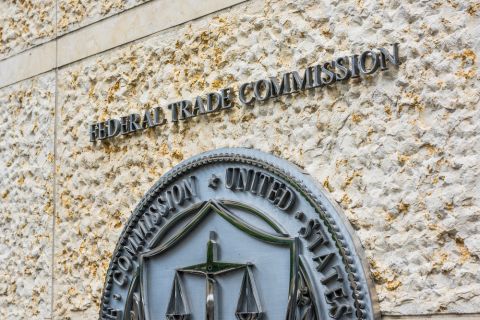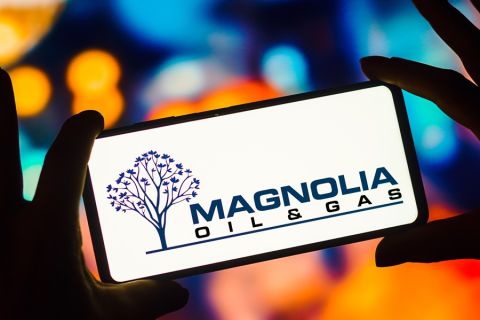France-based Adionics said its direct lithium extraction (DLE) technology has reached “full industrial readiness,” after 1,500 hours of brine testing showed lithium recovery rates of up to 98% and lithium chloride purity of up to 99%.
The testing, which took place at a facility owned by lithium producer SQM in Atacama Salar, Chile, involved testing five lithium brines using a customized proprietary liquid formulation called Flionex. The technology was able to selectively capture lithium, leaving out boron, magnesium, potassium and sulfates, Adionics said in a Feb. 5 news release. The company noted the tests were conducted under conditions that included changes in feed brine composition and varying temperatures at a high altitude.
“With lithium recovery rates and purity that set new industry benchmarks, we’re not just extracting lithium, we’re setting the stage for a cleaner, more efficient future in energy storage,” said Adionics CEO Gabriel Toffani. “This is an important step in ensuring a more sustainable supply chain for the batteries that power our clean energy transition.”
DLE is seen as a quicker and more environmentally-friendly way to extract lithium. The process also doesn’t require as much land compared to lithium brine extraction, which uses mines and evaporation ponds for brine to sit for several months or years as the sun evaporates most of the liquid content, ultimately leaving behind lithium and other metals.
The test results were released this week amid continued heightened interest in lithium, which is a critical ingredient for items such as electric vehicle batteries, rechargeable batteries and energy storage. Efforts to reduce greenhouse gas emissions globally has prompted companies to turn to lower carbon energy sources.
Chile produced about 39,000 metric tons of lithium in 2022, about one-third of the world’s lithium production, according to Statista. In 2023, Chile introduced a National Lithium Strategy, looking to bolster public-private collaboration while growing the industry with reduced environmental and social impacts.
Here’s a look at other renewable energy news:
RELATED
NAPE: In Basins Familiar to E&Ps, Lithium Rush Offers Little Gold
Biofuels/RNG
Strategic Biofuels Lands Investment Commitment for Green Fuels Project

Renewable fuel company Strategic Biofuels said Feb. 8 it has decided to primarily produce sustainable aviation fuel (SAF) at its planned Louisiana Green Fuels (LGF) project instead of renewable diesel, having landed a major investment commitment from Japan-based Sumitomo Corp.
Strategic Biofuels and Sumitomo subsidiary Sumitomo Corp. of Americas (SCOA) entered a joint development agreement for the project at the Port of Columbia in Caldwell Parish, Louisiana. As part of the agreement, SCOA will form a Japanese-based investment consortium with a goal to fund most of the capital needed to reach final investment decision (FID) and an early 2025 construction start, according to a news release.
SOCA plans to provide a 20-year offtake for about 640 million gallons of renewable fuels produced along with all state and federal renewable fuel credits, the release states.
“The shift to SAF is an exciting moment for us and our partners, for the energy landscape in Louisiana and for the greater global energy transition overall,” said Strategic Biofuels CEO Paul Schubert. “Although we have a lot of work ahead of us, our team is fully prepared to advance the project to FID and supply SCOA with SAF.”
Many airlines are turning to SAF to help decarbonize operations and lower emissions. The fuel can be blended with conventional jet fuel without a need for new planes or engines due to its similar chemical composition. It can be produced using a variety of feedstock. Strategic Biofuels plans to use about 1 million tons per year of forestry waste as feedstock for the Louisiana biorefinery. The facility will also use green energy from an integrated biomass-fired plant to produce 86 megawatts (MW) of power. The company said 1.36 million metric tons per year (mtpa) of CO2 produced will be sequestered from both of the operations.
SLB will provide carbon sequestration services for the project.
“Our partnership with Strategic Biofuels is just another example of our commitment to support the energy transition within the Americas,” said Sandro Hasegawa, general manager, Energy Innovation Initiative Americas at SCOA. “Supporting the LGF project means bringing groundbreaking technology to the Port of Columbia that enables the local economy and sustains the natural environment.”
Aether Fuels, GTI Energy Form Partnership
Climate tech company Aether Fuels and GTI Energy, a nonprofit technology development organization, have teamed up to commercialize a method to develop sustainable fuels from waste streams, according to a Feb. 5 news release.
Aiming to help the aviation and ocean shipping industries reduce emissions, the two began an R&D partnership in 2022 to build on a gas-to-liquid technology program started by GTI in 2016. Aether and GTI have since developed a new concept that converts a wide range of carbon feeds at a lower cost, the release states.
“The new solution has been demonstrated in an integrated pilot line at GTI Energy’s Chicago-area campus producing 1.5 gallons of sustainable fuels per day,” according to the release. “A 100 gallon per day integrated pilot will start construction at this campus in March.”
The newly announced global exclusive licensing agreement takes the partnership from the R&D phase into a commercialization phase. The licensing agreement gives Aether exclusive global rights to certain key GTI Energy gas to liquids technologies, while the partnership agreement extends their R&D contract and establishes a route for Aether to further R&D to scale the new solution, the release states.
RELATED
SAF End-users, Producers Talk Challenges, Solutions
Hydrogen
HNO Unveils Plans for Green Hydrogen Facility in Houston
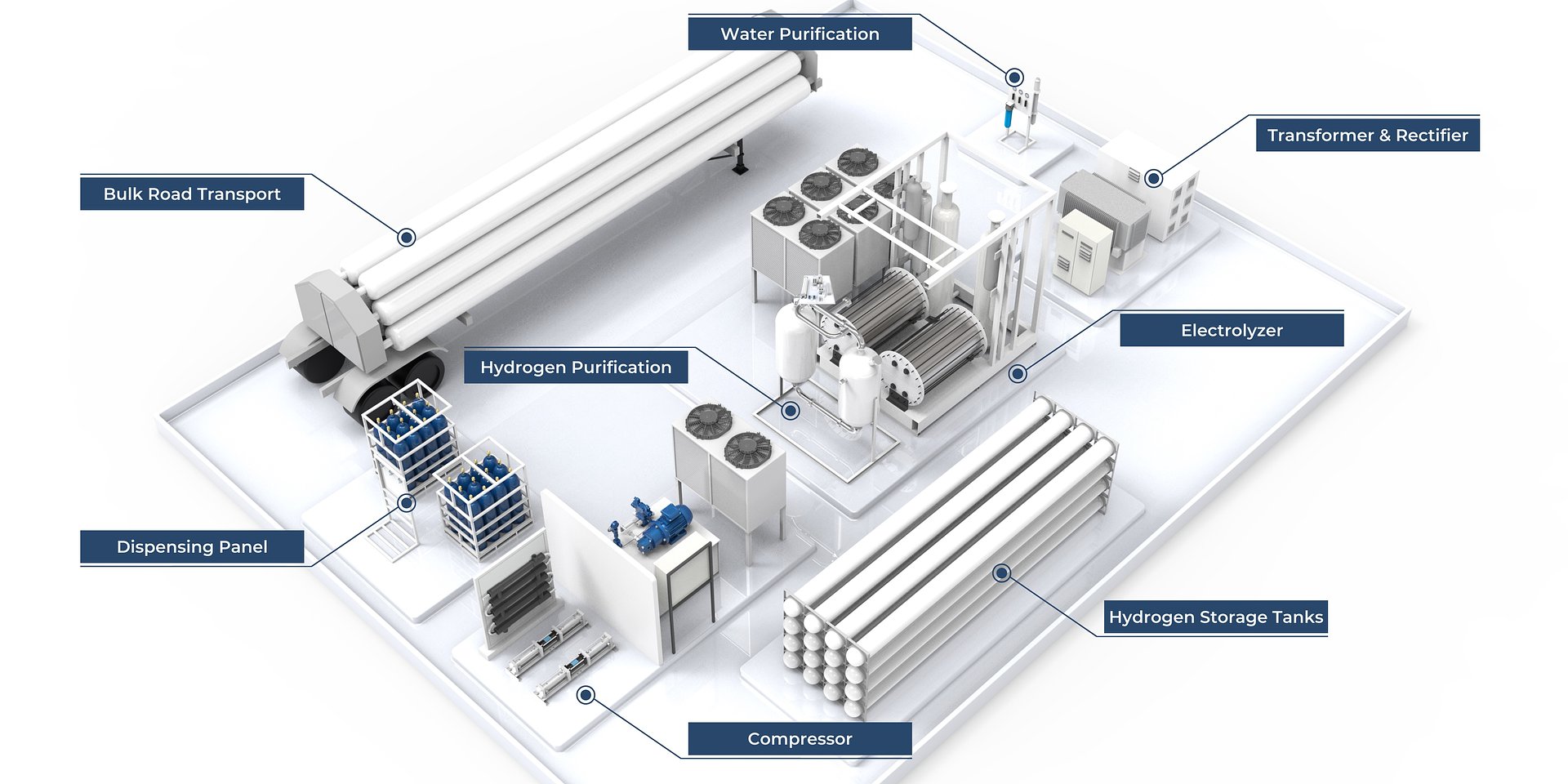
California-based HNO International partnered with electrolyzer manufacturer Element One Energy and the Pneumatic and Hydraulic Co. to develop a first-of-its-kind scalable hydrogen production project in Houston.
HNO, a green hydrogen tech company, said Feb. 8 the companies aim to develop a 500 kg per day green hydrogen production facility, targeting completion in second-quarter 2024. It will mark the first installation of HNO’s modular Scalable Hydrogen Energy Platform, which is designed to produce, store and dispense hydrogen from water using a 1.25-MW electrolyzer.
“The development of the 500 kg per day green hydrogen production facility in Houston is a testament to our dedication to advancing sustainable hydrogen infrastructure,” said Donald Owens, chairman at HNO International.
The platform, which requires of footprint of less than 3,000 sq ft, can be scaled to produce more than 5,000 kg of hydrogen per day, HNO said.
“This facility is just the beginning, as we have plans for additional installations in 2024, 2025, and beyond, further solidifying our position as leaders in the hydrogen energy infrastructure sector.”
SunHydrogen, COTEC Advance Green Hydrogen Panel Technology
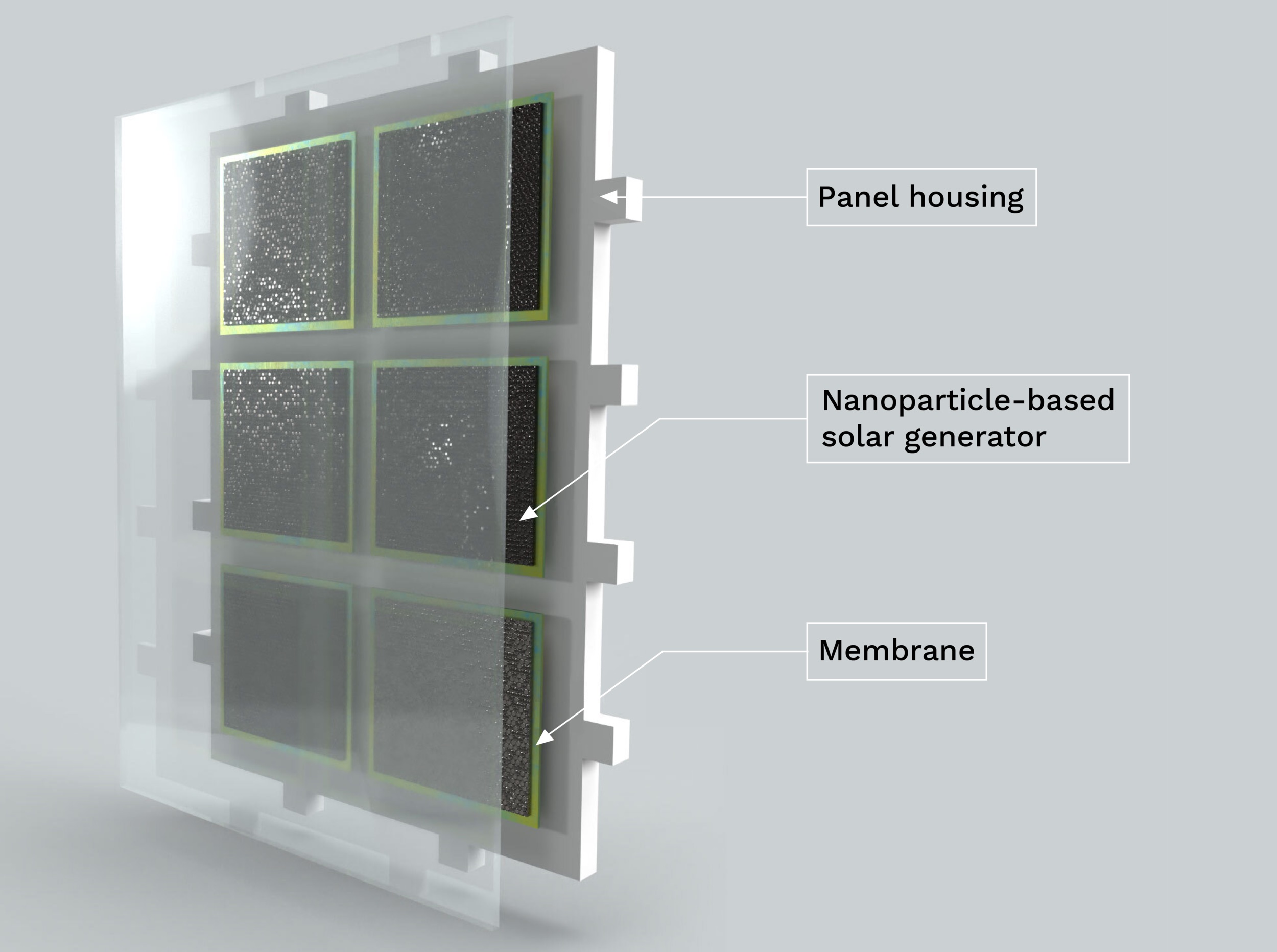
SunHydrogen, the Iowa-based company that is developing pioneering technology to produce green hydrogen panels, has moved to the next phase of production with partner COTEC of South Korea.
The U.S. company’s 1 sq m hydrogen panel encases multiple hydrogen generators immersed in water. “Each hydrogen generator contains billions of electroplated nanoparticles, autonomously splitting water into hydrogen and oxygen,” SunHydrogen said.
COTEC has replicated SunHydrogen’s proprietary process in a lab, using advanced electroplating techniques. COTEC’s initial exploration phase is now complete, according to the release.
“Given the breakthrough nature of our technology, our team is mindful of the fact that scaling to 1 [square meter] presents inherent challenges, and we believe COTEC is the ideal partner to help us address those challenges,” SunHydrogen’s CEO Tim Young said.
The company is also working with other consultants and collaborators, including the University of Iowa and the University of Michigan, to move the technology toward commercialization.
Germany Outlines $17B Plan to Subsidize Gas-to-hydrogen Shift
Germany’s government has agreed plans to subsidize gas power plants that can switch to hydrogen, the economy ministry said on Feb. 5, with a price tag of $17 billion in subsidies as part of efforts to supplement intermittent renewable energy and speed up the transition to low carbon generation.
The announcement follows pressure from the industry, impatient for detail after the government had promised the strategy last year as Germany counts on hydrogen to help the country move away from gas and coal.
The tender process for the four gas plants with total capacity of up to 10 GW would take place soon, the ministry said, without specifying when.
The state support for companies to build and operate the future hydrogen-ready gas power plants will total around 16 billion euros ($17 billion), including capital and operating subsidies, two coalition sources told Reuters on Feb. 5.
The ministry said hydrogen transition plans should be drawn up by 2032 to enable the plants to be fully switched to hydrogen between 2035 and 2040. The government will also subsidize power plants running exclusively on hydrogen with a capacity of up to 500 MW for energy research purposes, the ministry said, without providing financial details.
RELATED
Kraft Heinz, Carlton Power Partner to Develop Green Hydrogen Plant
CEO: Linde Not Affected by Latest US Green Subsidies Package Updates
Air Products Sees $15B Hydrogen, Energy Transition Project Backlog
Nel Realigns Supply Agreement with Nikola, Supplies Fortescue
RNG
Clean Energy Begins RNG Production at Tri-Cross in South Dakota
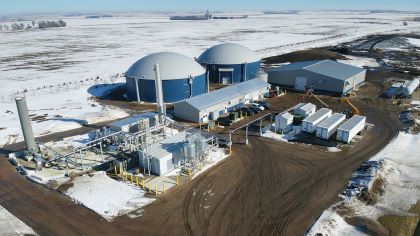
California-based Clean Energy Fuels Corp. started production at its new renewable natural gas (RNG) facility at the 5,000-cow Tri-Cross Dairy Farm, according to a Feb. 8 news release.
Located in Viborg, South Dakota, the facility is expected to produce 1 million gallons of RNG annually.
Clean Energy Fuels said construction costs for the facility, including the digesters and processing plant, was $34 million. Construction was completed in December 2023, followed shortly afterward by RNG injection.
“We anticipate 2024 to be a pivotal year in the demand for RNG fuel in the transportation market with the introduction of Cummins’ X15N natural gas engine for heavy-duty trucks,” Clay Corbus, Clean Energy’s senior vice president of renewables. “Clean Energy’s fueling infrastructure is expanding to meet that demand and we’ll need a constant source of additional low-carbon RNG to supply those stations.”
Solar
Recurrent Lands Microsoft as Customer, Closes Project Financing
Canadian Solar subsidiary Recurrent Energy sealed a power purchase agreement with Microsoft Corp. for 100% of the energy produced at the 127-MW Bayou Galion Solar project being developed in Northeast Louisiana, the solar company said Feb. 6.
The tech giant, which is on a mission to become carbon negative by 2030, also plans to purchase the renewable energy credits produced by the solar farm. Located in Morehouse Parish, the project is expected to be operational by fall 2024.
Canadian Solar also said it closed $160 million in project financing for the project. Mitsubishi UFJ Financial Group Inc. acted as coordinating lead arranger for the financing.
“This project represents an important milestone as we continue to advance our pipeline in new markets and increase project ownership,” said Recurrent CEO Ismael Guerrero. “Bayou Galion Solar extends our relationship with our esteemed partners at MUFG and establishes a new relationship with Microsoft, one of the world's largest renewable energy power buyers.”
BP Weighs Bringing in Partners to Solar Business

BP is considering bringing in partners to solar developer Lightsource BP to help boost returns from the fast-growing business, CEO Murray Auchincloss said Feb. 6.
BP last November announced it will take full ownership of Lightsource BP (LSBP), buying the remaining 50% stake in the joint venture for $322 million as part of the British oil giant's drive to build up its renewable energy capacity.
BP has held talks with companies to join as partners in its solar business once the LSBP deal closes, probably mid-year, Auchincloss told Reuters after the company reported an annual profit of $14 billion in 2023.
“It was a really opportunistic moment for us to take control of 100% (of LSBP). We will repackage the investment, we'll bring in partners,” Auchincloss said.
“We’re in conversations with companies, but I haven’t made up my mind about that yet,” he said when asked about bringing in partners.
BP has been under pressure from investors to show it can make strong returns from its renewable energy businesses, which are part of its strategy to reduce oil production by 25% from 2019 levels by 2030 to 2 MMbbl/d.
LSBP earns returns in the mid-teens, which is competitive with the oil and gas business, Auchincloss said.
BP also plans to bring in partners to its offshore wind projects, Auchincloss added.
Wind
S&P Downgrades Danish Wind Power Firm Ørsted on US Offshore Risks
S&P downgraded Danish wind power giant Ørsted to BBB on Feb. 7, citing higher leverage on its balance sheet and major U.S. impairments in 2023 due to supply chain delays and higher costs.
S&P said Ørsted’s business risk profile has weakened from last year, but was still satisfactory. It expects the world’s biggest offshore wind farm developer would be able to successfully manage the substantial industry risks it faces.
The offshore wind industry has been struggling with rising inflation, interest rate hikes and supply chain delays, which have endangered plans by U.S. President Joe Biden and several states to replace fossil fuels with offshore wind to fight climate change.
The ratings agency maintained a stable outlook on Ørsted, saying it expected improvements in the company’s adjusted funds from operations to debt and EBITDA over 2025.
Ørsted said in an emailed statement the downgrade would not have any implications on its business plans or its associated funding strategy.
Earlier on Feb. 7, the company trimmed its investment and capacity targets, as well as paused dividend payouts as part of a major review.
S&P said it expects these moves to restore credit metrics for the firm over 2024 and 2025.
Ørsted has been battling to restore investor confidence after halting the development of two U.S. offshore wind projects in November last year, with related impairments surging above $5 billion.
Reuters and Hart Energy Staff contributed to this report.
Recommended Reading
Green Swan Seeks US Financing for Global Decarbonization Projects
2024-02-21 - Green Swan, an investment platform seeking to provide capital to countries signed on to the Paris Agreement, is courting U.S. investors to fund decarbonization projects in countries including Iran and Venezuela, its executives told Hart Energy.
BP Pursues ‘25-by-‘25’ Target to Amp Up LNG Production
2024-02-15 - BP wants to boost its LNG portfolio to 25 mtpa by 2025 under a plan dubbed “25-by-25,” upping its portfolio by 9% compared to 2023, CEO Murray Auchincloss said during the company’s webcast with analysts.
Sunoco’s $7B Acquisition of NuStar Evades Further FTC Scrutiny
2024-04-09 - The waiting period under the Hart-Scott-Rodino Antitrust Improvements Act for Sunoco’s pending acquisition of NuStar Energy has expired, bringing the deal one step closer to completion.
BP’s Kate Thomson Promoted to CFO, Joins Board
2024-02-05 - Before becoming BP’s interim CFO in September 2023, Kate Thomson served as senior vice president of finance for production and operations.
Magnolia Oil & Gas Hikes Quarterly Cash Dividend by 13%
2024-02-05 - Magnolia’s dividend will rise 13% to $0.13 per share, the company said.




